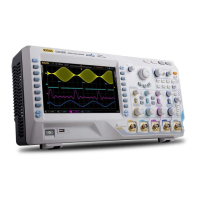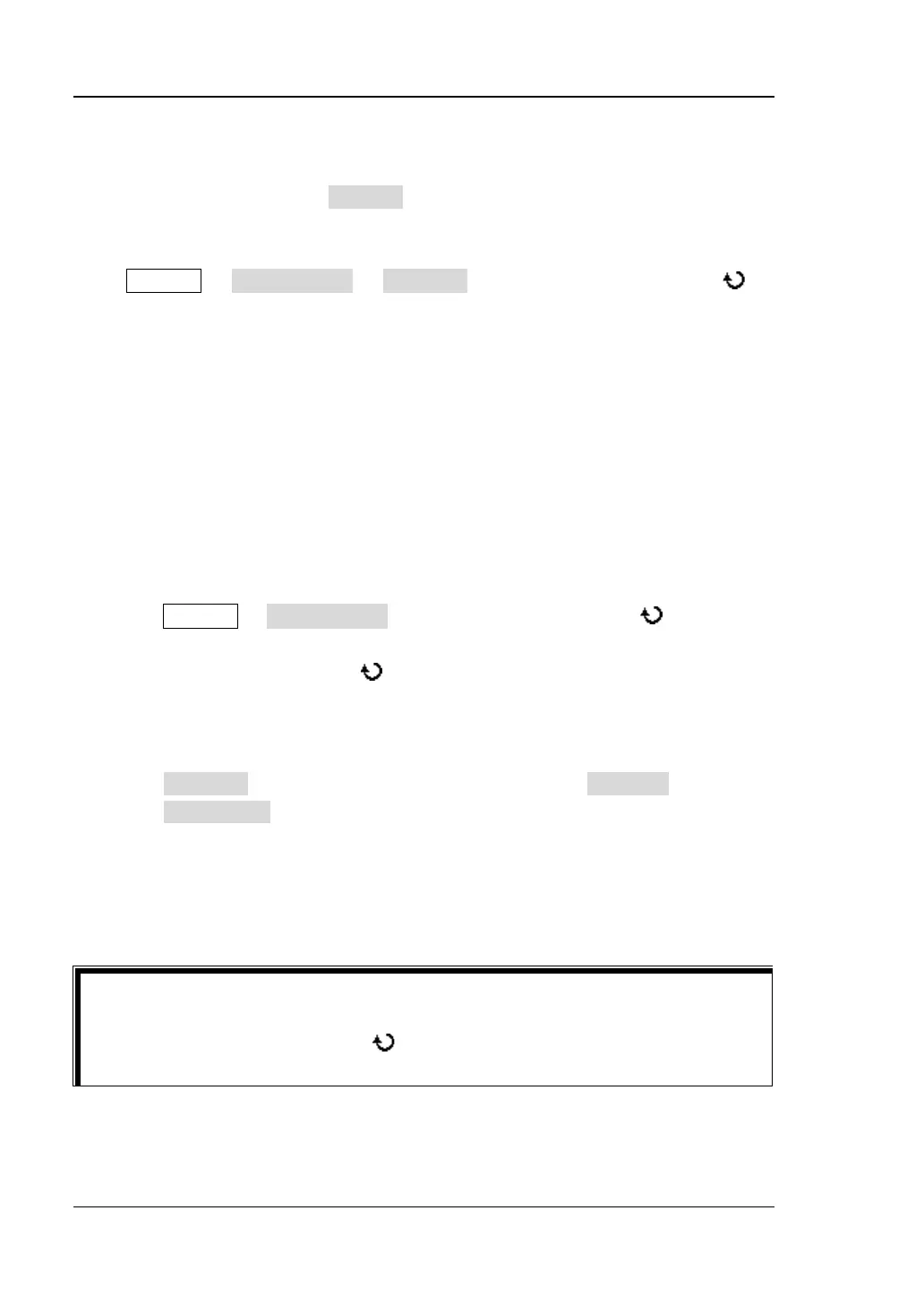RIGOL Chapter 12 Store and Recall
12-10 DS4000E User’s Guide
To Select File Type
In addition to the file types in Storage, the oscilloscope can also display some files
for advanced applications via the oscilloscope.
Press Storage Disk.Manage File Type; turn the multi-function knob to
select the desired file type and press the knob. You can select *.*, *.trc, *.wfm, *.stp,
*.png, *.jpeg, *.bmp, *.csv, *.pf, *.gel, *.txt, *.ref or *.tiff. The default is *.*
(display all types of files). Only files of which the suffixes of the filename match with
the file type selected will be displayed in the current disk.
To Create a New File or Folder
This operation is only valid in external storage. Before performing the operation,
make sure that a USB storage device is connected correctly.
1. Press Storage Disk.Manage; turn the multi-function knob to select the
external disk (“Disk D” or “Disk E”) and press the knob to open the disk.
2. Turn the multi-function knob to select the desired directory under which to
create a new file or folder. The default is the root directory of the USB storage
device (D:\). The current directory is displayed at the upper-left corner of the
disk management interface.
3. Press File Type to select the desired file type and press New File or directly
press New Folder to open the filename input interface.
This oscilloscope supports Chinese/English input method. The filename or folder
name can contain letters, numbers, underscores, spaces and Chinese characters
and the length of the characters is limited to 31 bytes (one Chinese character
occupies two bytes). Please input the desired name to create a new file or folder
by referring to “English Input Method” and “Chinese Input Method”
Tip
D
uring the name input, use the menu softkeys to select different operation areas,
then turn the multi-function knob to select the desired content and press
down the knob to input the content selected.

